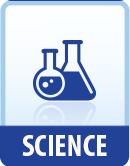|
This section contains 837 words (approx. 3 pages at 300 words per page) |

|
Salmonella food poisoning, consistent with all food poisoning, results from the growth of the bacterium in food. This is in contrast to food intoxication, were illness results from the presence of toxin in the food. While food intoxication does not require the growth of the contaminating bacteria to reasonably high numbers, food poisoning does.
Salmonella is a Gram negative, rod-shaped bacterium. The gastrointestinal tracts of man and animals are common sources of the bacterium. Often the bacterium is spread to food by handling the food with improperly washed hands. Thus, proper hygiene is one of the keys to preventing Salmonella food poisoning.
The food poisoning caused by Salmonella is one of about ten bacterial causes of food poisoning. Other involved bacteria are Staphylococcus aureus, Clostridium perfringens, Vibrio parahaemolyticus, and certain types of Escherichia coli. Between 24 and 81 million cases of food borne diarrhea due to...
|
This section contains 837 words (approx. 3 pages at 300 words per page) |

|


